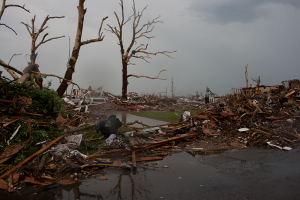 Engineering researchers at the University of Arkansas are developing an emergency communications network that will maintain operation during natural disasters and provide critical warnings and geographic information to people affected by the disasters. The researchers are honing and testing the system now and expect to deploy a pilot network at the end of 2012.
Engineering researchers at the University of Arkansas are developing an emergency communications network that will maintain operation during natural disasters and provide critical warnings and geographic information to people affected by the disasters. The researchers are honing and testing the system now and expect to deploy a pilot network at the end of 2012.
The system, which the researchers call an emergency “mesh,” is self-sustainable and solar-powered, which means it would provide continuous, uninterrupted service even when the power grid or wireless communication systems are out of commission. Users would receive critical information on popular devices such as mobile phones, personal digital assistants, tablets and laptops.
“The ultimate goal of this project is to save human lives,” said Nilanjan Banerjee, assistant professor of computer science and computer engineering. “Deployment of this system could warn people to get out of harm’s way and could help emergency services personnel reach victims much faster. This last part is critically important because we know that many deaths occur in the minutes and hours after a disaster strikes.”
A hardware team led by Pat Parkerson, associate professor of computer science and computer engineering and co-principal investigator on the project, is developing and testing different hardware systems for the mesh.
